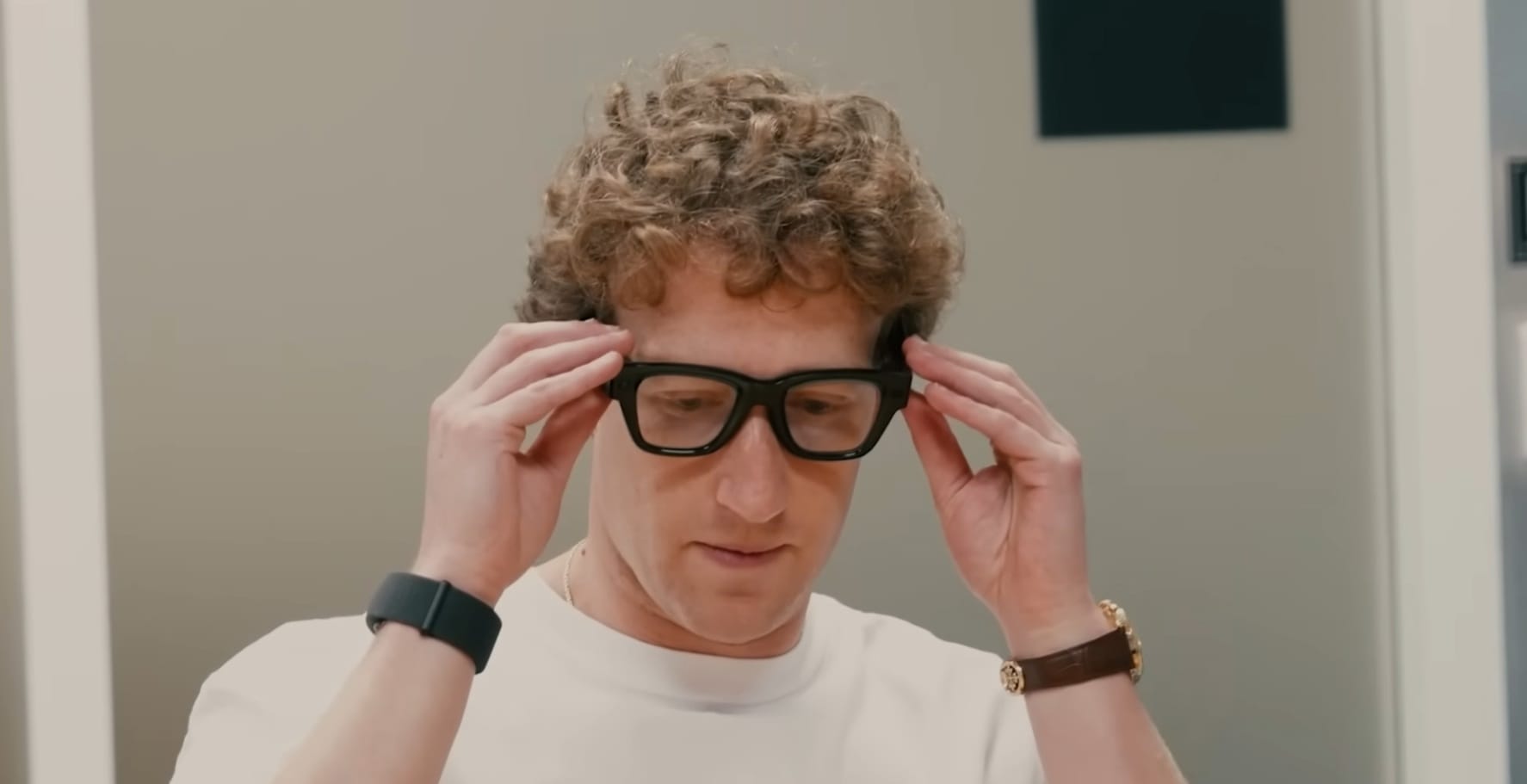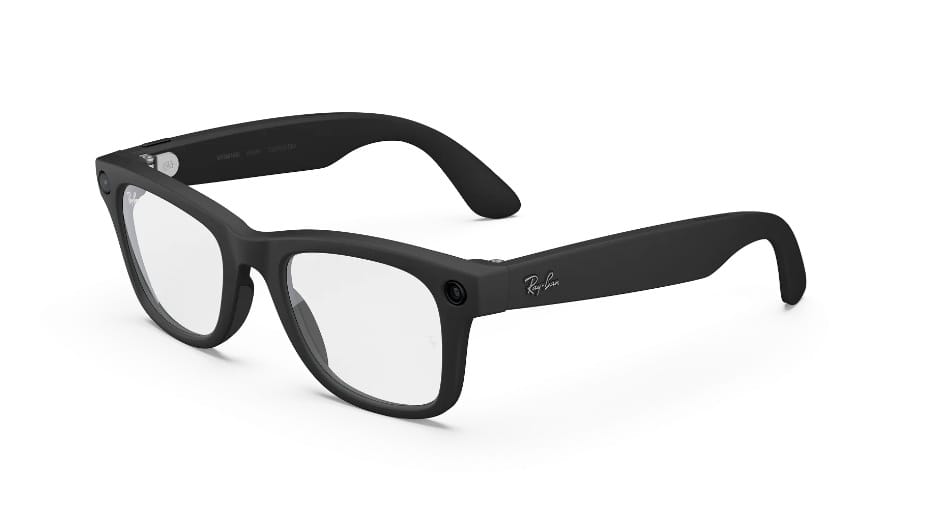
Over the last few months 404 Media has covered some concerning but predictable uses for the Ray-Ban Meta glasses, which are equipped with a built-in camera, and for some models, AI. Aftermarket hobbyists have modified the glasses to add a facial recognition feature that could quietly dox whatever face a user is looking at, and they have been worn by CBP agents during the immigration r…

Over the last few months 404 Media has covered some concerning but predictable uses for the Ray-Ban Meta glasses, which are equipped with a built-in camera, and for some models, AI. Aftermarket hobbyists have modified the glasses to add a facial recognition feature that could quietly dox whatever face a user is looking at, and they have been worn by CBP agents during the immigration raids that have come to define a new low for human rights in the United States. Most recently, exploitative Instagram users filmed themselves asking workers at massage parlors for sex and shared those videos online, a practice that experts told us put those workers’ lives at risk.
404 Media reached out to Meta for comment for each of these stories, and in each case Meta’s rebuttal was a mind-bending argument: What is the difference between Meta’s Ray-Ban glasses and an iPhone, really, when you think about it?
“Curious, would this have been a story had they used the new iPhone?” a Meta spokesperson asked me in an email when I reached out for comment about the massage parlor story.
Meta’s argument is that our recent stories about its glasses are not newsworthy because we wouldn’t bother writing them if the videos in question were filmed with an iPhone as opposed to a pair of smart glasses. Let’s ignore the fact that I would definitely still write my story about the massage parlor videos if they were filmed with an iPhone and “steelman” Meta’s provocative argument that glasses and a phone are essentially not meaningfully different objects.
Meta’s Ray-Ban glasses and an iPhone are both equipped with a small camera that can record someone secretly. If anything, the iPhone can record more discreetly because unlike Meta’s Ray-Ban glasses it’s not equipped with an LED that lights up to indicate that it’s recording. This, Meta would argue, means that the glasses are by design more respectful of people’s privacy than an iPhone.
Both are small electronic devices. Both can include various implementations of AI tools. Both are often black, and are made by one of the FAANG companies. Both items can be bought at a Best Buy. You get the point: There are too many similarities between the iPhone and Meta’s glasses to name them all here, just as one could strain to name infinite similarities between a table and an elephant if we chose to ignore the context that actually matters to a human being.
Whenever we published one of these stories the response from commenters and on social media has been primarily anger and disgust with Meta’s glasses enabling the behavior we reported on and a rejection of the device as a concept entirely. This is not surprising to anyone who has covered technology long enough to remember the launch and quick collapse of Google Glass, so-called “glassholes,” and the device being banned from bars.
There are two things Meta’s glasses have in common with Google Glass which also make it meaningfully different from an iPhone. The first is that the iPhone might not have a recording light, but in order to record something or take a picture, a user has to take it out of their pocket and hold it out, an awkward gesture all of us have come to recognize in the almost two decades since the launch of the first iPhone. It is an unmistakable signal that someone is recording. That is not the case with Meta’s glasses, which are meant to be worn as a normal pair of glasses, and are always pointing at something or someone if you see someone wearing them in public.
In fact, the entire motivation for building these glasses is that they are discreet and seamlessly integrate into your life. The point of putting a camera in the glasses is that it eliminates the need to take an iPhone out of your pocket. People working in the augmented reality and virtual reality space have talked about this for decades. In Meta’s own promotional video for the Meta Ray-Ban Display glasses, titled “10 years in the making,” the company shows Mark Zuckerberg on stage in 2016 saying that “over the next 10 years, the form factor is just going to keep getting smaller and smaller until, and eventually we’re going to have what looks like normal looking glasses.” And in 2020, “you see something awesome and you want to be able to share it without taking out your phone.” Meta's Ray-Ban glasses have not achieved their final form, but one thing that makes them different from Google Glass is that they are designed to look exactly like an iconic pair of glasses that people immediately recognize. People will probably notice the camera in the glasses, but they have been specifically designed to look like "normal” glasses.
Again, Meta would argue that the LED light solves this problem, but that leads me to the next important difference: Unlike the iPhone and other smartphones, one of the most widely adopted electronics in human history, only a tiny portion of the population has any idea what the fuck these glasses are. I have watched dozens of videos in which someone wearing Meta glasses is recording themselves harassing random people to boost engagement on Instagram or TikTok. Rarely do the people in the videos say anything about being recorded, and it’s very clear the women working at these massage parlors have no idea they’re being recorded. The Meta glasses have an LED light, sure, but these glasses are new, rare, and it’s not safe to assume everyone knows what that light means.
As Joseph and Jason recently reported, there are also cheap ways to modify Meta glasses to prevent the recording light from turning on. Search results, Reddit discussions, and a number of products for sale on Amazon all show that many Meta glasses customers are searching for a way to circumvent the recording light, meaning that many people are buying them to do exactly what Meta claims is not a real issue.
It is possible that in the future Meta glasses and similar devices will become so common that most people will understand that if they see them, they would assume they are being recorded, though that is not a future I hope for. Until then, if it is all helpful to the public relations team at Meta, these are what the glasses look like:

And this is what an iPhone looks like:

Feel free to refer to this handy guide when needed.